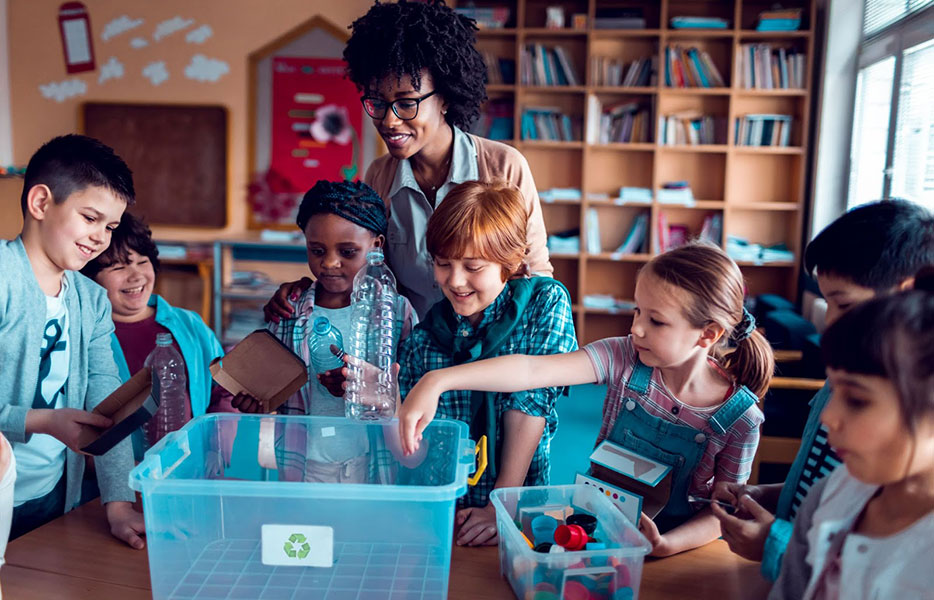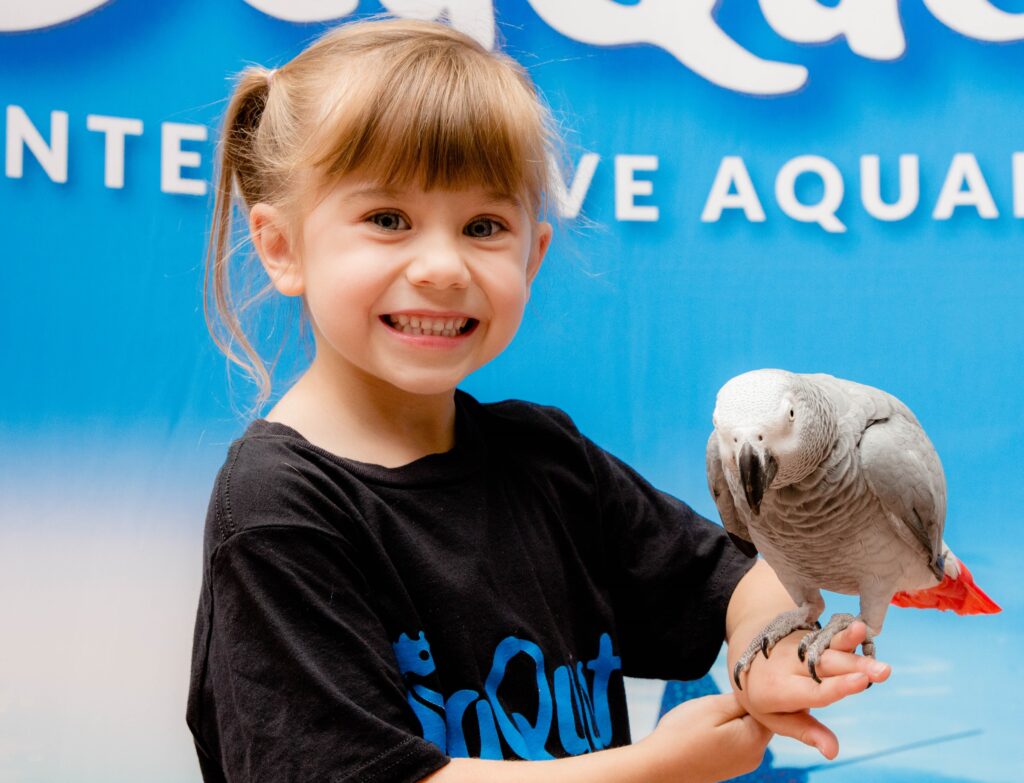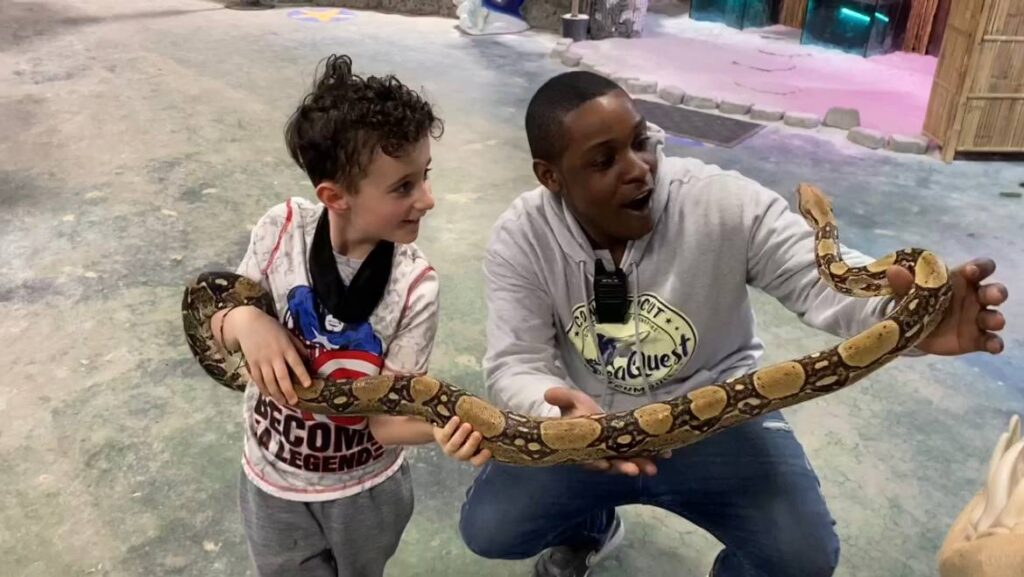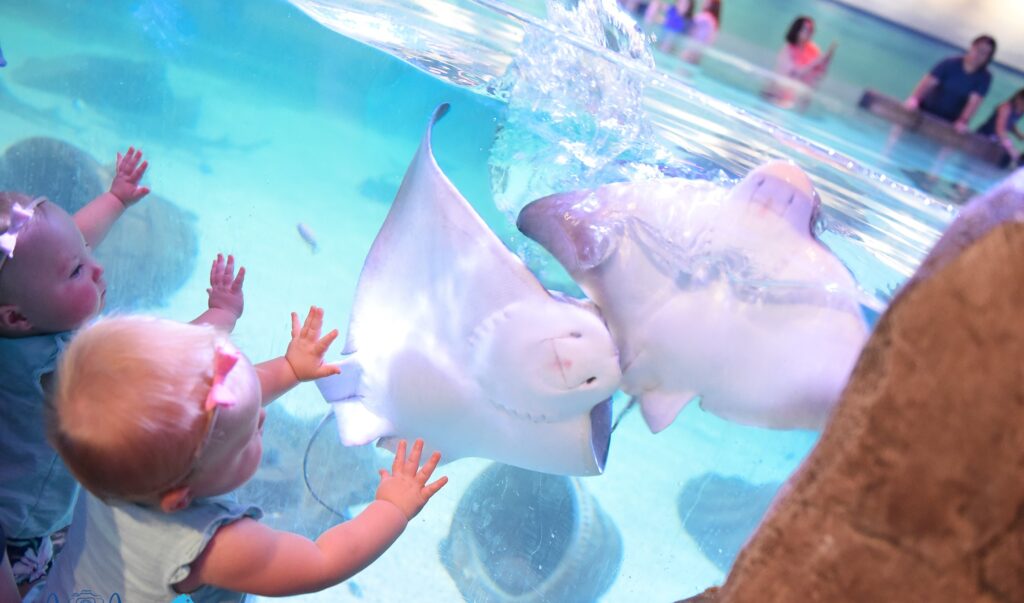SeaQuest Guide to Teaching Kids About Sustainability
Share it on:

What is Sustainability?
Why is Teaching Kids About Sustainability Important?
How to Talk to Kids About Sustainability
Sustainable Activities for Kids
- Everyday Sustainable Activities for Kids and Teens
- Outdoor Sustainable Activities for Kids and Teens
- Educational Activities that Teach Kids About Sustainability
Whether you’ve got little tykes at home or teens who want to help save the world, it’s never too early to start teaching kids about sustainability! Climate change is a defining issue of our time. Shifting weather patterns, rising sea levels, increase in greenhouse gases and so much more put our children at risk every day. This is a global epidemic and without drastic action now, these threatening impacts will only make environmental safety harder to sustain in the future. So what does this mean for our kids’ now? Well, there’s still so much we can do to help! By teaching kids about sustainability and how to take care of the environment, we ensure they have a greener and more healthy future. We’ve provided a brief guide to help kids excited about sustainability and some suggestions on activities for kids of all age groups!
What is Sustainability?
Sustainable is the practice of participating in activities that enrich the community, economy, and environment. In other words, sustainable practices help to conserve or enhance resources of Earth. There are three basic pillars of sustainability:
- Economic: This is the economic development aspect to sustainability. Businesses, corporations, organizations work to incorporate and develop sustainable programs to help towards environmental protection. Governments provide incentives to encourage businesses to develop more sustainable practices. This also establishes a sustainable economy. It helps movement of goods and services to people in need while maintaining integrity in acquiring the resources in an eco-friendly manner. When an economy functions sustainably, both humans and the environment flourish!
- Social: This a social development aspect to make people more aware of what environmental harm is occurring now and how it affects our community along with other communities worldwide. It’s bringing public awareness to help provide practical solutions, protect public health, and educate people on why sustainability is crucial in their lives.
- Environmental: This is protecting the environment. Informing people and encouraging organizations to implement sustainable practices in their home and work spaces. Recognizing we all live in fragile ecosystems that we should respect and protect – waterways, plants, and animals – we’re all affected by climate change concerns. The goal is to build thriving communities, healthy ecosystems, and replenish much needed resources.
Why is Teaching Kids About Sustainability Important?
This might seem like a pretty serious topic to discuss with our youth, and some may find it hard to truly understand. However, there are plenty of ways we can strive to educate kids about sustainability, no matter their age. As adults, we already understand the dangers our planet is exposed to. Climate change and over-industrialization are on our radar, and have been for many years. Kids, on the other hand, need to experience first-hand how these things affect them directly, and how they affect others and the planet. Teaching kids about sustainability now prepares them for the future. It helps shape their habits and behaviors to be more environmentally conscious. And as they grow in adulthood, each decision they make can have a positive impact in the world. The best way is to start small. Here’s some insight on why it’s necessary to begin an open dialogue about sustainability with kids early in life.
How to Talk to Kids About Sustainability
In order to discuss the importance of sustainability to kids, you’ve got to capture and keep their attention! Kids, particularly those little ones, will zone out during a long, serious talk. They may also be defiant if it seems new ideas or habitats are being forced on them, and suddenly. A simpler and more relaxed approach is key, and can make it fun for everyone involved. A recommended first step is to ask your kids what they know about climate change and sustainability. Have kids explain to you what their idea or concept is. Ask if they know what it means to recycle or why it’s important to recycle when they can. Their response can give you a sense of what they truly understand and what they don’t. Then devise a plan to correct misconceptions and help steer them in the right direction.
Here’s a few tips to keep in mind as you introduce sustainability to kids and how they can start to live a green lifestyle!
- Explain the ‘Why’
- If kids can gain an understanding of ‘why’ sustainability is an important factor, they’ll be more open to new and eco-friendly changes.
- Make it Fun
- Kids love games and challenges. They also learn through play. So make sustainability fun and exciting. Give them a chance to earn rewards and prizes, and recognize their efforts to be more environmentally aware at home or at school.
- Educate About ‘How’
- Chances are most kids don’t know where things come from. Things like the food they eat, the toys they play with, the power in the house…etc. When kids understand how their food is made or where electricity generates from, they will be more mindful and less wasteful.
- Be the Example
- We all know the famous saying “Do as I say and not as I do” – but in this instance, adults are just as responsible to “Do” and not just “Say” Set the example! If you want kids to work towards sustainable living, adults must do the same. Make household behaviors such as recycling, using less water and power, and creating less carbon emissions from car use part of everyday life. Actions speak louder than words!
Sustainable Activities for Kids
So how do you begin to implement sustainable projects for kids? Well, you can start small, but the impact will definitely be big! Here are some sustainable activities to help your kids learn to help save the planet and save their future!
Everyday Sustainable Activities for Kids and Teens
There are many eco-friendly activities that kids, and even families, can do at home. Creating a new habit cycle will naturally stay with kids as the years move forward. Here are a few ways to implement essential sustainability habits for kids so everyone can start living a zero-waste life at home.
- Lights Out! Teach kids to rise and shine by opening curtains or blinds first thing in the morning. Sunlight fills your house with a warm ambiance and can provide natural heat. Help kids to remember to flip those light switches in rooms they are not currently using.
- Watch Water Usage: Kids and teens are notorious for taking those long showers. They may be shocked to learn that every minute in the shower can cost as much as 150 gallons of water a month! Put time limits on showers and challenge teens to take quick and efficient showers.
- Chef Training: Get kids in the kitchen and start cooking more at home! Eating out can generate food waste with oversized food portions and over abundance of trash from take-out containers. Kids will get some great culinary skills and meal prepping will help save costs for families overall. Also, minimize the microwave use during your cooking sessions. Microwave usage has adverse effects for humans and the environment, and is not considered eco-friendly.
- DIY Cleaning Products: This can be a chance to conduct a fun science experiment with kids! There are simple and affordable ways to make your own eco-friendly cleaning products.
Outdoor Sustainable Activities for Kids and Teens
Spending time outdoors not only helps kids get some much needed physical activity but gives a perspective on the environment in a crucial way. These fun outside activities will help kids develop better habits towards protecting the environment.
- Litter Clean-up: Trash-collecting can be a fun game! It’s a great way to get kids out of the house and involved in chores, but it’s a big step in building their sustainability awareness!
- Recycle & Sort Game: Sorting the recycling may already be a chore for your kids. But turning it into a fun activity will mean they’re more likely to keep up the habit as adults. And remember to teach kids the 3 R’s – Reduce, Reuse, Recycle!
- Build a Garden: Introduce kids into building and tending to a small garden. Then watch how the excitement “grows” as their favorite fruits or plants begin to harvest! Not only will this get kids excited about agriculture, it can teach healthy eating habits. It’s also building life skills as they can know how to grow their own food in the future.
- Start Composting: A compost bin can teach your kids about reusing food waste. A great activity that takes some work but helps create more fertile soil for their new garden.
- Walk or Ride: Kids love bike rides. Try to get the family out of traffic and into the fresh air with biking or walking to local areas of interest. Visit the local farmers market or spend a fun afternoon in the park, maybe doing some trash clean up!
Educational Activities that Teach Kids About Sustainability
Education and sustainability remain two of the most important topics right now in human history. Getting kids involved in fun activities that help broaden their academic understanding about climate change and protecting the environment can drastically shift their approach to sustainability.
- STEM and Sustainability: STEM Activities for the family can be a great way to introduce and incorporate sustainability practices at home for kids! STEM participation has been found to play a key role in shaping the future of kids and teens by helping them explore their interests and can lead to future job aspirations.
- Hands On Learning: Check out a zoo, discovery center or aquarium near you, such as SeaQuest! SeaQuest offers unique, educational encounters that give kids the chance to journey through five different continents under one roof! Exhibits are designed to give kids and families an increased understanding of our planet’s oceans, marine life, and complex ecosystems. Kids can also learn a great deal about some essential conservation issues, including deforestation, shark finning, overfishing, carbon emissions, plastic pollution, and responsible pet ownership.
- Participate in Sustainability at School: Teens can voice concerns about eco-friendly practices at school. Maybe they can rally a group of friends and start a club that does trash-collecting, recycling and advocates for more environmental protections on campus. Using less paper and promoting less plastic use in the luncheon room can have a great impact on sustainable conditions in schools and public areas.
When it comes to teaching kids about sustainability, there are a number of methods and strategies of education you can choose from. The best way to ensure that our kids grow up with appreciation and awareness around sustainability is to establish a path that allows not only kids, but adults, to live an environmentally aware lifestyle. Kids will soak up everything they see, hear and do when those around them are embracing sustainability as a whole new way of living! To see a change in the way our kids perceive sustainability, we first need to start with ourselves.




